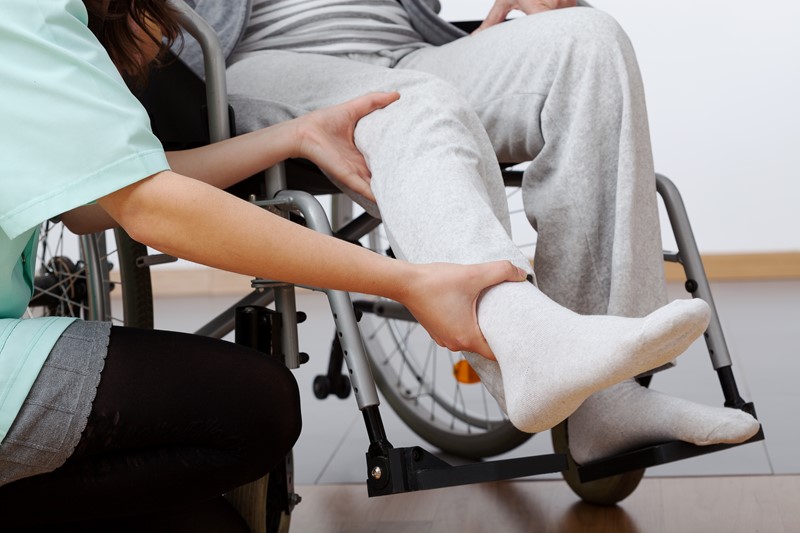The Northern Ireland Electronic Care Record has really proved its worth during the coronavirus outbreak. Almost every aspect of the clinical response, from creating ‘hot’ and ‘cold’ treatment centres, to enabling remote and paperless working, to sharing information with families, has been supported by functionality in the record, which uses Orion Health technology.
“What struck me during the outbreak was how adaptable this system was and how quickly our teams were able to scale-up and reconfigure for different activities,” says Stephen Beattie, ITS eHealth programme manager at the Northern Ireland Business Services Organisation.
“Our clinical community was coming to us with ideas and we were working with Orion Health to implement them. It was almost like the early days, when we were setting up and working in an agile, innovative way to implement the vision of our users. As we prepared to deal with the outbreak everybody re-engaged and re-committed to doing what needed to be done.”
As services reconfigured, the NIECR moved with them
The Northern Ireland Electronic Care Record is one of the most extensive shared care records in the UK. It launched seven-years ago as a clinical portal, bringing together information from Northern Ireland’s five health and social care trusts and its ambulance service to create a single patient record.
Since then, additional features have been added. Two important elements are the Emergency Care Summary Record, or ECS, which holds demographic and basic medical information about a patient, and the Key Information Summary Record, or KIS, which includes additional details to support end-of-life care.
More recently, the NIECR team has been using Orion Health Coordinate to build a patient pathway that is being used for diabetes patients, but which will be used with other patient groups, and Orion Health Engage to create a patient or citizen portal that is being trialled with people living with dementia.
As planning to deal with the coronavirus got underway, the record had around 25,000 users; but this soon increased significantly, as access was extended to new groups of frontline workers and the independent sector. “One of the main hospitals in Belfast was repurposed as a Nightingale hospital, and that meant the urgent surgery that could no longer be done there had to move into the independent sector,” Stephen Beattie explains.
“So, there was an urgent need for the independent sector to get access to the NIECR, so clinicians working there had information about the patients coming in. There was a question about whether we could really countenance sending patients into the independent sector without access to the NIECR, which shows just how central it has become to patient care.”
Proven functionality found innovative new uses
At the same time, changes were made in the record to support the care of Covid-19 patients. Enabling paperless working was a priority, because porters couldn’t enter Covid-19 wards and, even if they could, hospitals wanted to reduce the risk of transmitting the disease on physical records.
So, new forms were created in the portal for Covid-19 admissions and ward rounds. Meanwhile, Southern Health and Social Care Trust undertook another practical piece of work that was subsequently shared with the other four health and social care trusts in the country.
Because families cannot visit Covid-19 patients, the trust set up a Covid-19 communications team, consisting of two senior medical staff, to call their next of kin and let them know how they are doing. The ‘next of kin’ details are recorded in the shared care summary that is part of Coordinate, and Orion Health created a new ‘progress note’ in pathway software to capture information from ward rounds.
This means the team always has the most up to date information to pass on. Project manager Mary McCluskey says this is a good example of where functionality that was already available in one part of the record has been put to good use in another during the crisis.
“Innovation is not always about inventing something new, it is about making better use of what you have got,” she says. What’s nice about this initiative is that it has been really well received by patients and their families.”
Remote working and virtual consultations were supported
There are further examples of how functionality that was available in one part of the NIECR has been used in another during the outbreak. For instance, GPs were already using e-triage functionality to seek advice about patients and to make referrals to hospital consultants.
As more and more clinicians started to work from home, e-triage was extended to the acute sector, so consultants could continue to assess patients and consult each other remotely. When audiology consultants said they needed a particular report to support their work, it was added to the portal.
Similarly, because many patient clinics and consultations are now being conducted over the telephone, a ‘progress note’ was created to capture key elements of the call and to incorporate them into the patient record. And more clinicians are now being made aware of the KIS and its important end-of-life information.
Building blocks ready for a new digital future
As the coronavirus crisis has played out, and the NHS as a whole has moved rapidly to adopt digital technology, there has been a growing sense that there is “no going back”. Stephen Beattie is convinced that many of the changes made to the NIECR will be retained and, indeed, that there will be a continued interest in using it to drive innovation in areas such as remote patient monitoring.
Mary McCluskey agrees: “I think the biggest changes are remote working and virtual consultation,” she says. “We need to work on how to capture the information from a remote consultation and on how we put it into a management plan to support patient monitoring in the community.
“However, we can progress things like that, and we should be able to do it quickly because people are now thinking ‘can we make it paperless’ and ‘can we do it remotely’.” Also, within the NIECR, Northern Ireland already has a lot of the tools it needs.
“The system is so mature that being able to continue to innovate sustainably is not that much of a challenge,” says Stephen Beattie. “That is what we have proved during Covid-19. Our BSO ITS staff, Trust IT and service staff and Orion Health’s staff worked over Easter to get the first changes in place, but the building blocks we needed were already there; and because of that we are also well prepared for the future, whatever that turns out to look like.”
This case study is one of a series of agile changes to existing regional IT systems managed at portfolio level by Karen Bailey, director of the BSO ITS service and David Bryce, head of BSO ITS which has supported the work of the NI CDIO Dan West in delivering digital support to health & social care across NI during this pandemic.



